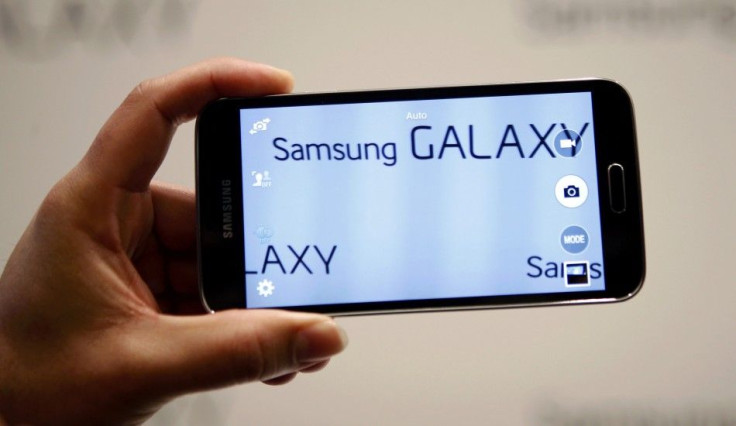5 Best-Selling Android Handsets in 2014

Many smartphones released in 2014 and late 2013 are packed with amazing features, hardware and software that are worthy of every dollar spent on the device.
Here is a list of killer devices currently ruling the market across the globe.
Samsung Galaxy S5, HTC One M8, Sony Xperia Z2, Google Nexus 5 and Motorola Moto X are at the forefront. This post focuses on the crucial specifications and overall advantages and disadvantages of each phone.
Samsung Galaxy S5
- 5.1-inch screen with 1,080 x 1,920 pixels display resolution
- Quad-core (Qualcomm Snapdragon 801) Krait 400 processor clocked at 2.5 GHz
- Android v4.4.2 (KitKat)
- 16 GB or 32 GB of internal storage with microSD card support for expansion up to 128 GB
- 2 GB RAM
- 16 MP rear-facing camera with LED flash and 2 MP front-facing camera
- User replaceable Li-Ion 2800 mAh battery
Advantages and Disadvantages
Galaxy S5, the latest Samsung flagship smartphone, includes a stunning display, generous battery life and killer camera unit. Also, the phone has a dust- and water-resistant exterior supporting microSD card slot for further expansion. The disadvantages include jumbled settings and notifications area and excessive Samsung's TouchWiz UI interference.
HTC One M8
- 5-inches screen with 1,080 x 1,920 pixels display resolution
- Quad-core (Qualcomm Snapdragon 801) Krait 400 processor clocked at 2.5 GHz (Asia and China) / 2.3 GHz (U.S. and EMEA)
- Android v4.4.2 (KitKat)
- 16 GB or 32 GB of internal storage with microSD card support for expansion up to 128 GB
- 2 GB RAM
- Dual 4 MP rear-facing camera with dual-LED (dual tone) flash and 5 MP front-facing camera
- Non-removable Li-Po 2600 mAh battery
Advantages and Disadvantages
The HTC One M8 includes premium build quality, stunning battery life, HTC only BoomSound stereo speakers, microSD card support and the relatively good 5 MP front-facing camera. The disadvantages include the camera hardware component that did not live up to the hype, and there is no water or dust-resistant exterior.
Sony Xperia Z2
- 5.2-inch screen with 1,080 x 1,920 pixels display resolution
- Quad-core (Qualcomm Snapdragon 801) Krait 400 processor clocked at 2.3 GHz
- Android v4.4.2 (KitKat)
- 16 GB of internal storage with microSD card support for expansion up to 128 GB
- 3 GB RAM
- 20.7 MP rear-facing camera with LED flash and 2.2 MP front-facing camera
- Non-removable Li-Ion 3200 mAh battery
Advantages and Disadvantages
It includes a solid battery unit, brilliant display, quality build with aluminium chassis that guarantees sturdiness, stunning camera specification and dust and water-proof exterior. Also, the handset comes with microSD card support housing the whopping 3 GB RAM. The only problem could be the limited internal storage capacity.
Google Nexus 5
- 4.95-inch screen with 1,080 x 1,920 pixels display resolution
- Quad-core (Qualcomm Snapdragon 800) Krait 400 processor clocked at 2.3 GHz
- Android v4.4 (KitKat) but upgradable to v4.4.2 (KitKat)
- 16 GB or 32 GB of internal storage with no microSD card support
- 2 GB RAM
- 8 MP rear-facing camera with LED flash and 1.3 MP front-facing camera
- Non-removable Li-Po 2300 mAh battery
Advantages and Disadvantages
When it comes to Nexus series of phones, the major advantage is the assurance from Google that the latest Android software updates will be received on time, without any delay. In addition, this phone is comparatively cheaper than the other top contenders. The disadvantages include battery life problem, no microSD card support.
Motorola Moto X
- 4.7-inch screen with 720 x 1,280 pixels display resolution
- Duad-core (Qualcomm MSM8960Pro Snapdragon) Krait processor clocked at 1.7 GHz
- Android v4.2.2 (Jelly Bean) but upgradable to v4.4 (KitKat)
- 16 GB or 32 GB of internal storage with microSD card support for expansion up to 128 GB
- 2 GB RAM
- 10 MP rear-facing camera with LED flash and 2 MP front-facing camera
- Non-removable Li-Ion 2200 mAh battery
Advantages and Disadvantages
The advantages include Google's timely Android update guarantee, a very cool form factor, and gesture controls. Like the Nexus 5, this phone is also cheaper when compared to the other top contenders. The disadvantages include very limited battery life, no microSD card support. In addition, as ZDNet pointed out, an unimpressive display due to lower resolution.
Conclusion
Smartphone preference can be attributed to individual usage and requirement. But going solely by the specs and disadvantages/advantages, Sony Xperia Z2 is a stand-out. Nexus 5 and the Moto X could have been better in many ways as stated above. But the silver lining is the timely Android update from Google.
What do you think is the best phone in the list?





















